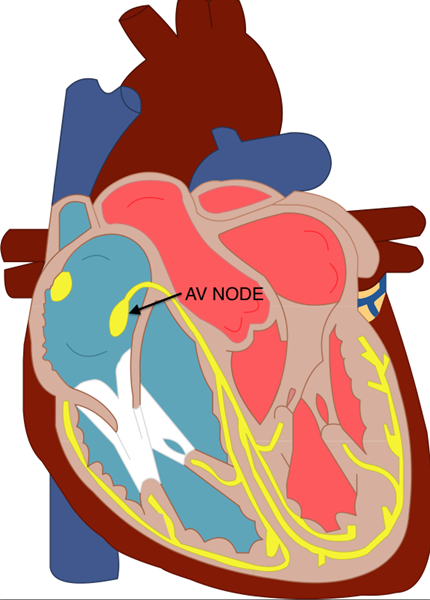Topic Reviews A-Z
Atrioventricular Nodal Ablation
When high doses of AV blocking drugs are not successful to lower ventricular rates in the setting of atrial fibrillation, AV node ablation can be utilized.
Remember that all atrial action potentials must pass through the AV node to reach the ventricle. AV node ablation destroys this connection stopping any atrial activity from reaching the ventricle. This results in the intrinsic pacemaker of the heart shifting from the atria to the ventricles. Unfortunately, the His-Purkinje system in the ventricles is only able to generate action potentials at a rate of 30-40 beats per minute resulting in severe bradycardia after the AV node is ablated. Thus, a permanent pacemaker must be implanted to prevent symptoms of bradycardia.
When atrial fibrillation is present with systolic heart failure, AV node ablation may be required for a biventricular pacemaker to work efficiencly. The QRS complex occurs at random intervals during atrial fibrillation and the biventricular pacing device does not know when to initiate atrial pacing. thus it may not be able to initiate biventricular pacing (if the native QRS complex comes earlier than expected). This results in less beneficial effects on cardiac output. Therefore, AV node ablation is frequently performed in atrial fibrillation patients undergoing biventricular pacing to eliminate the unpredictability of the onset of the QRS complex. This allows for near 100% biventricular pacing.

